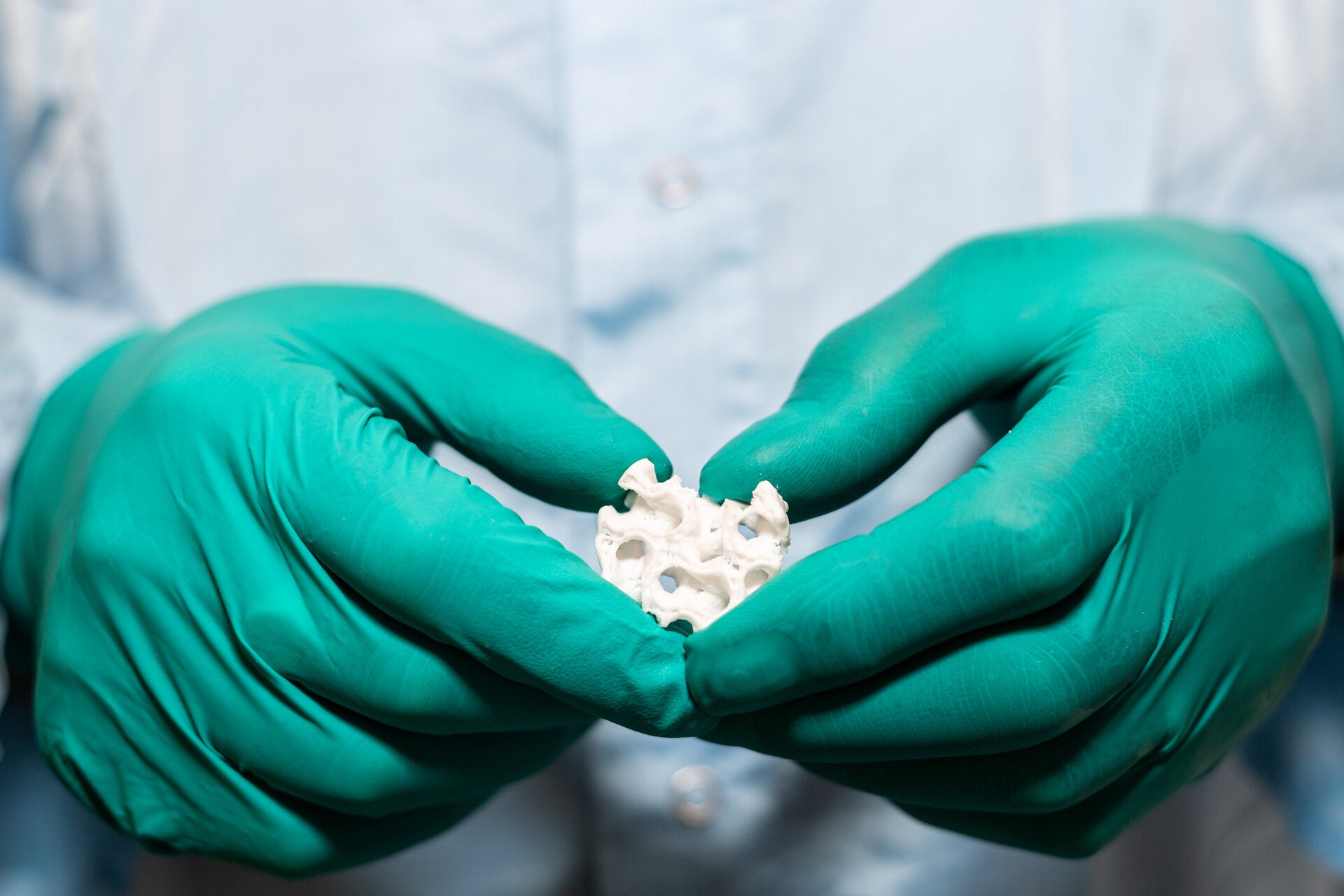Artificial bone and skin could give astronauts ‘spare parts’ during dangerous missions to Mars. ESA says
3D bioprinting may prove an integral part of astronauts’ health as we look to terraform other worlds

An artificial bone has been developed by the European Space Agency to give astronauts access to the “spare parts” that might be needed for long-haul space missions.
This bone sample is part of a selection of items on the 99 Objects of ESA ESTEC website, which displays artifacts the agency has developed over the last 50 years.
The bone was developed using 3D bioprinting technology, with the ESA calling it an “early step” towards “emergency medicine in space”.
As well as bone, it is possible this technology could also be used for skin grafts, or to even generate internal organs.
Nutrient-rich ‘bio-ink’ made from the human blood plasma of the astronauts themselves could be obtained in ‘minus 1g’ gravity’.
Serious burn injuries could involve a skin graft using muscle taken from another part of the patient’s body; while this is capable on Earth, it is more difficult in space and there is no guarantee that the secondary damage will heal perfectly.
Astronauts in zero gravity often lose bone density, which means injuries like fractures might be more common when they are in orbit or exploring planets like Mars. This has led to a great deal of research in preventative measures that astronauts can take
In 2020, it was suggested that the microbes in astronauts’ stomachs could manipulated using prebiotics and probiotics could protect them, as well as a diet of fibre to kickstart their metabolism. Research from last month also suggests that ‘space lettuce’ could maintain bone density on long journeys.
“Right now, astronauts on the International Space Station have certain exercise regimens to try to maintain bone mass,” said graduate student Kevin Yates who is leading the work, “but they’re not typically on the International Space Station for more than six months.” Voyages to Mars would take 10 months, and then astronauts would be expected to spend a year on the Red Planet before returning home.
The ESA has been working on this technology for two years now, and had even succeeded in printing objects upside down, but there are stiff challenges to overcome.
“Plasma has a highly fluid consistency, making it difficult to work with in altered gravitational conditions,” Nieves Cubo from the University Hospital of Dresden Technical University said at the time.
“We therefore developed a modified recipe by adding methylcellullose and alginate to increase the viscosity of the substrate. Astronauts could obtain these substances from plants and algae respectively, a feasible solution for a self-contained space expedition.”
It is hoped that the development of this technology for astronauts will also accelerate its process on Earth as well, helping those with bone problems heal faster.
Join our commenting forum
Join thought-provoking conversations, follow other Independent readers and see their replies
Comments